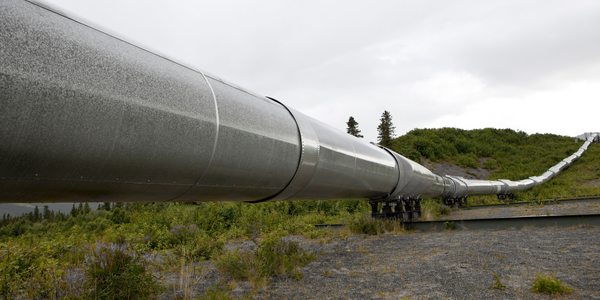Customer Company Size
Mid-size Company
Region
- Europe
Country
- Belgium
Product
- SimpliVity hyperconverged infrastructure
Tech Stack
- Microsoft SQL Server
- Computer Associates Application and Network Performance Monitoring Platform
Implementation Scale
- Enterprise-wide Deployment
Impact Metrics
- Customer Satisfaction
- Cost Savings
- Productivity Improvements
Technology Category
- Infrastructure as a Service (IaaS) - Cloud Computing
Applicable Functions
- Business Operation
Use Cases
- Infrastructure Inspection
- Remote Asset Management
Services
- System Integration
- Cloud Planning, Design & Implementation Services
About The Customer
Simac is a Belgian IT solutions integrator and services provider. The company uses SimpliVity hyperconverged infrastructure to power its remotely hosted application and network performance monitoring service. The SimpliVity solution enables Simac to deliver higher performance, revenue-critical services—reliably, easily and cost-effectively. Simac’s legacy data center—a mix of HP servers and NetApp storage systems—had become too costly and complex to manage and scale. Provisioning customers and troubleshooting problems was a time-consuming, resource-intensive proposition involving many distinct, low-level administrative interfaces.
The Challenge
Simac, a Belgian IT solutions integrator and services provider, was facing challenges with its legacy data center—a mix of HP servers and NetApp storage systems—which had become too costly and complex to manage and scale. Provisioning customers and troubleshooting problems was a time-consuming, resource-intensive proposition involving many distinct, low-level administrative interfaces. Simac planned to move its IT operations to a colocation facility to support its growing business. Deciding the time was right for a technology refresh, Steven De Prins, Cross Domain Architect for Simac, selected SimpliVity hyperconverged infrastructure as the platform for the company’s next-generation IT architecture.
The Solution
Simac deployed two 2U SimpliVity nodes in its new colocation facility, replacing nearly an entire rack of legacy equipment. A redundant configuration ensures continuous availability in the event of hardware failures. A third SimpliVity node in the corporate data center supports development, test and disaster recovery functions. The SimpliVity solution simplifies operations and improves service agility. IT generalists in the Remote Monitoring business can provision customers quickly and easily, without involving corporate IT. Service administrators can now clone, move, backup and restore VMs in two or three mouse clicks. The SimpliVity solution also improves application performance and availability. The platform performs hardware-assisted inline deduplication, compression and optimization on all of its data while conserving storage capacity and freeing up system resources for business-critical applications.
Operational Impact
Quantitative Benefit

Case Study missing?
Start adding your own!
Register with your work email and create a new case study profile for your business.
Related Case Studies.
.png)
Case Study
Improving Vending Machine Profitability with the Internet of Things (IoT)
The vending industry is undergoing a sea change, taking advantage of new technologies to go beyond just delivering snacks to creating a new retail location. Intelligent vending machines can be found in many public locations as well as company facilities, selling different types of goods and services, including even computer accessories, gold bars, tickets, and office supplies. With increasing sophistication, they may also provide time- and location-based data pertaining to sales, inventory, and customer preferences. But at the end of the day, vending machine operators know greater profitability is driven by higher sales and lower operating costs.

Case Study
Remote Wellhead Monitoring
Each wellhead was equipped with various sensors and meters that needed to be monitored and controlled from a central HMI, often miles away from the assets in the field. Redundant solar and wind generators were installed at each wellhead to support the electrical needs of the pumpstations, temperature meters, cameras, and cellular modules. In addition to asset management and remote control capabilities, data logging for remote surveillance and alarm notifications was a key demand from the customer. Terra Ferma’s solution needed to be power efficient, reliable, and capable of supporting high-bandwidth data-feeds. They needed a multi-link cellular connection to a central server that sustained reliable and redundant monitoring and control of flow meters, temperature sensors, power supply, and event-logging; including video and image files. This open-standard network needed to interface with the existing SCADA and proprietary network management software.

Case Study
Driving Digital Transformations for Vitro Diagnostic Medical Devices
Diagnostic devices play a vital role in helping to improve healthcare delivery. In fact, an estimated 60 percent of the world’s medical decisions are made with support from in vitrodiagnostics (IVD) solutions, such as those provided by Roche Diagnostics, an industry leader. As the demand for medical diagnostic services grows rapidly in hospitals and clinics across China, so does the market for IVD solutions. In addition, the typically high cost of these diagnostic devices means that comprehensive post-sales services are needed. Wanteed to improve three portions of thr IVD:1. Remotely monitor and manage IVD devices as fixed assets.2. Optimizing device availability with predictive maintenance.3. Recommending the best IVD solution for a customer’s needs.

Case Study
Marine and Industrial Displays by Caterpillar
Caterpillar needed a flexible platform for a new generation of connected human-machine interfaces across a wide variety of industrial environments. Examples include marine, petroleum pumping, generators, custom hydraulics, mining, and rail applications.




---nyse--hpe_1.jpg)




